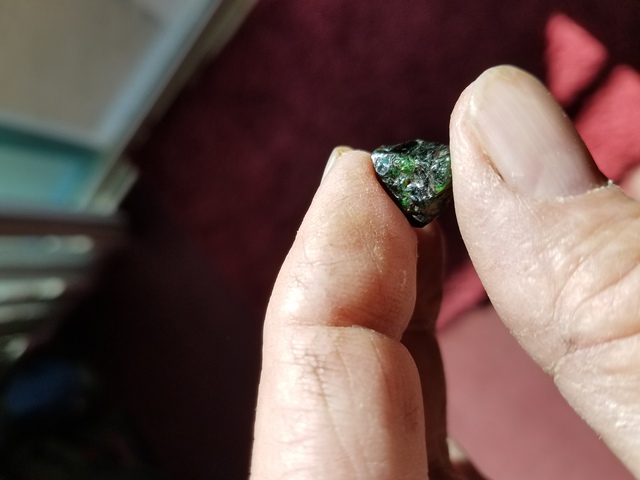In album: Alexandrite 3 Gems
(1.5 cts. 2.5 cts. 5 cts.) Alexandrite is one of the rarest of all colored gemstones and is famed for its color change from green in daylight to red under incandescent light. ... Alexandrite is a variety of chrysoberyl, with an excellent hardness of 8.5 on the Mohs scale. Is Alexandrite more valuable than diamonds? Few gemstones are as valuable as diamonds, but alexandrite may be one of them. ... According to Alexandrite.net, a website dedicated to the stone, alexandrites below 1 carat are more expensive than both rubies and diamonds. What is the true color of alexandrite? Alexandrite is the highly regarded color changing variety of Chrysoberyl. The color of Alexandrite changes under different lighting conditions. If viewed in daylight, its color is greenish blue to dark yellow-green. If viewed in incandescent or candle light, its color is pink to red. How much is alexandrite per carat? Size always affects alexandrite value. You can see this reflected in our Price Guide below. In sizes up to one carat, top-quality natural gems can sell for up to $15,000 per carat. Over one carat, the prices range from $50,000 to $70,000 per carat! Is alexandrite a precious stone? When the mineral exhibits good pale green to yellow color and is transparent, then it is used as a gemstone. The three main varieties of chrysoberyl are: ordinary yellow-to-green chrysoberyl, cat's eye or cymophane, and alexandrite. ... However, fine-color material is extremely rare. If any other color-change combinations are observed, the stone should be identified as a color-change chrysoberyl. A classic alexandrite color change: Green in daylight to slightly purple Red in incandescent light. What color is natural alexandrite? In viewing natural Alexandrite in daylight it should be a green or bluish-green coloration; the closer to emerald green the better. In warm incandescent light, candlelight or tungsten light the color should change to a reddish-purple, purple, or bluish lavender. What is Alexandrite made of? Alexandrite is the rare color-change variety of the mineral chrysoberyl. Its rarity is a result of its unlikely chemical makeup. Alexandrite can only form when aluminum and beryllium combine with trace elements like iron, titanium and, most importantly, chromium.



